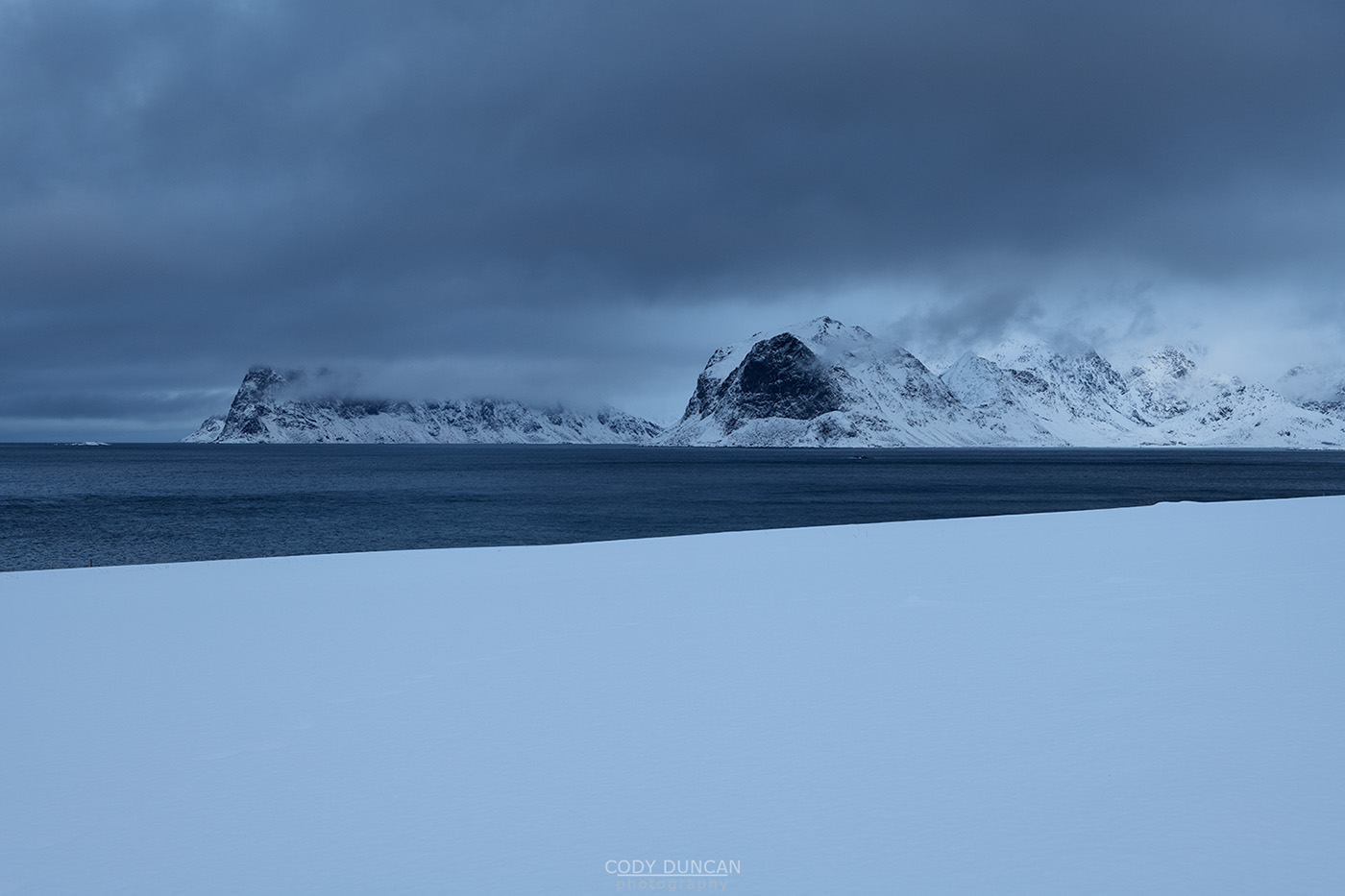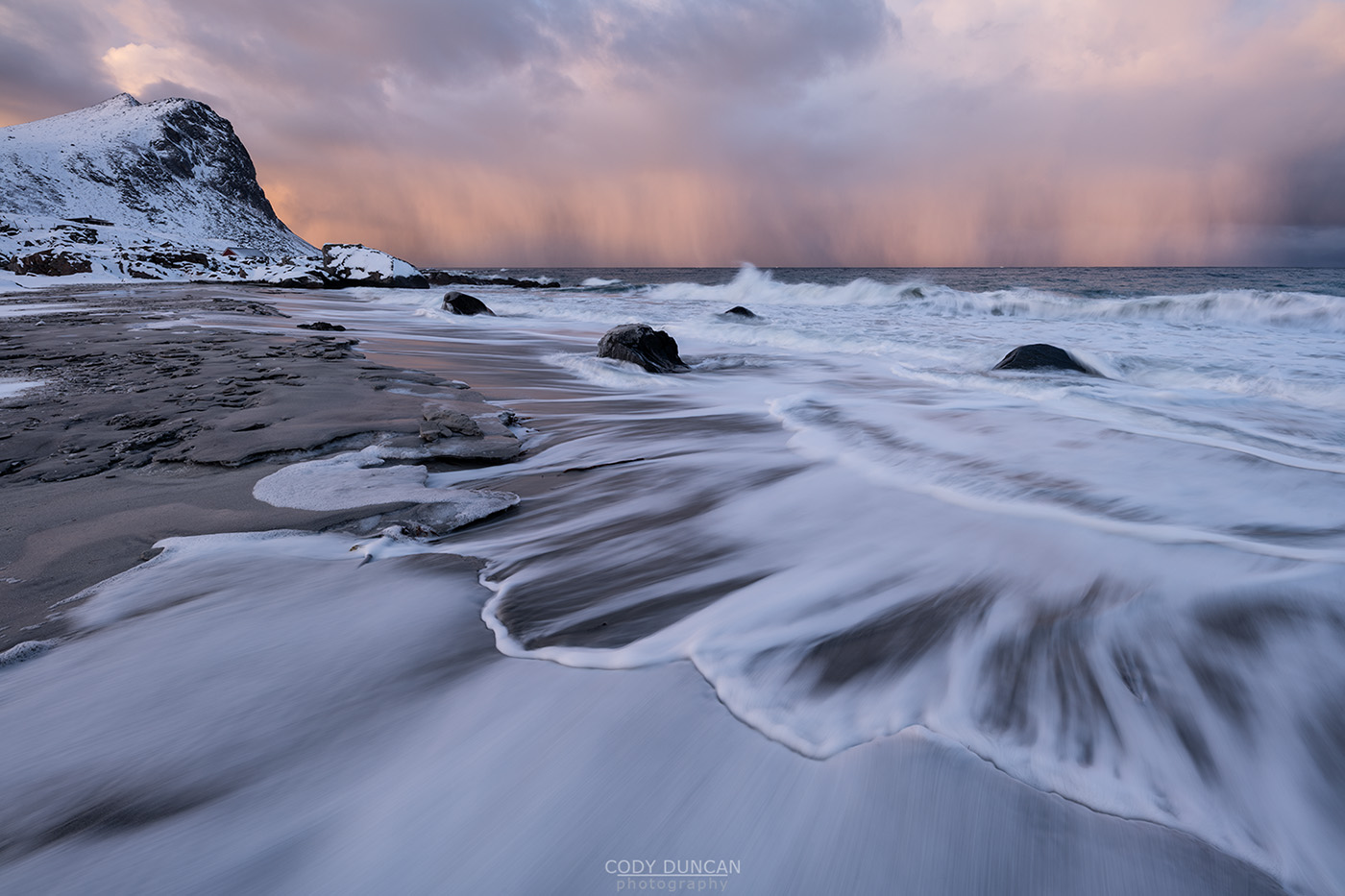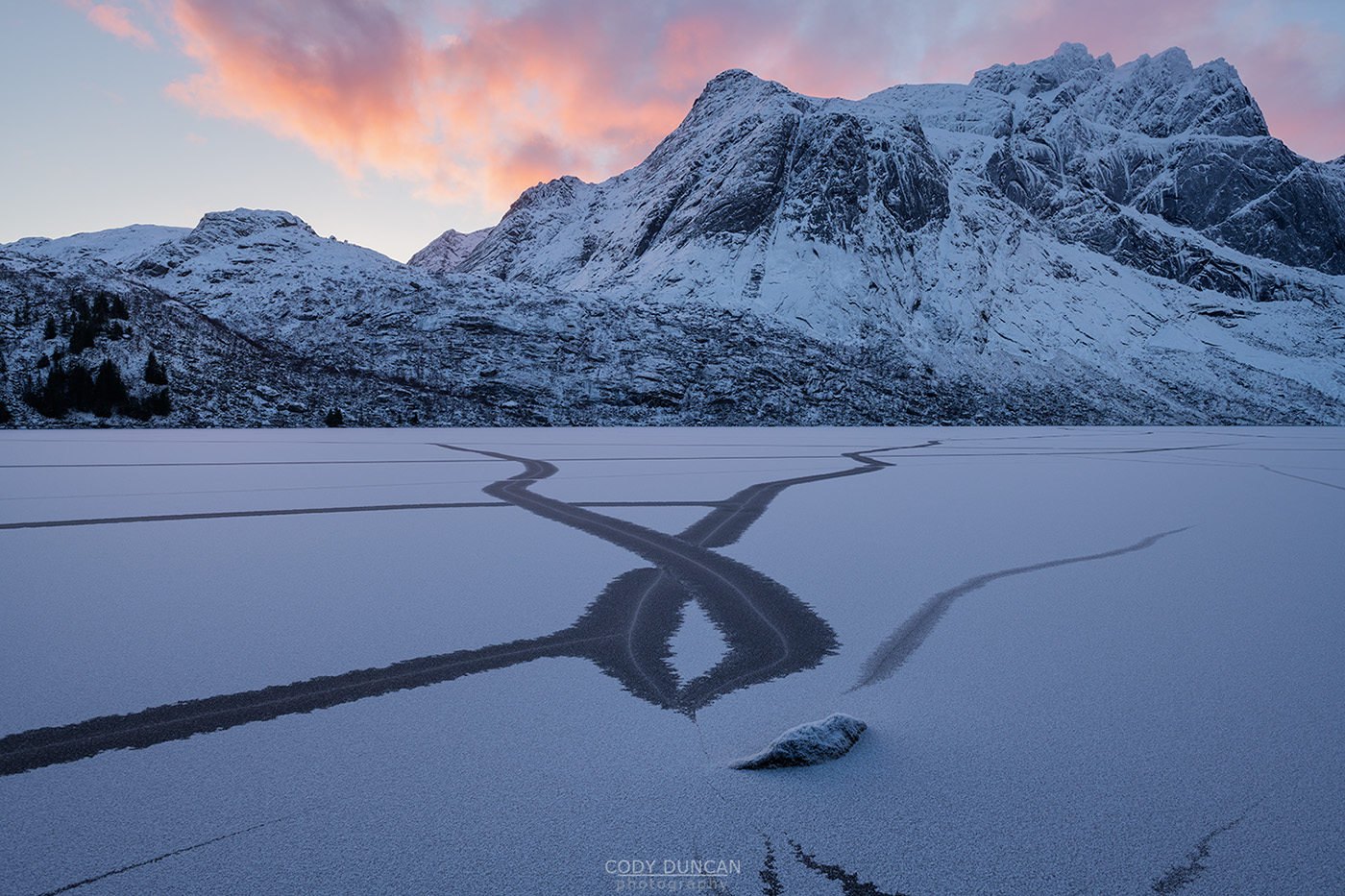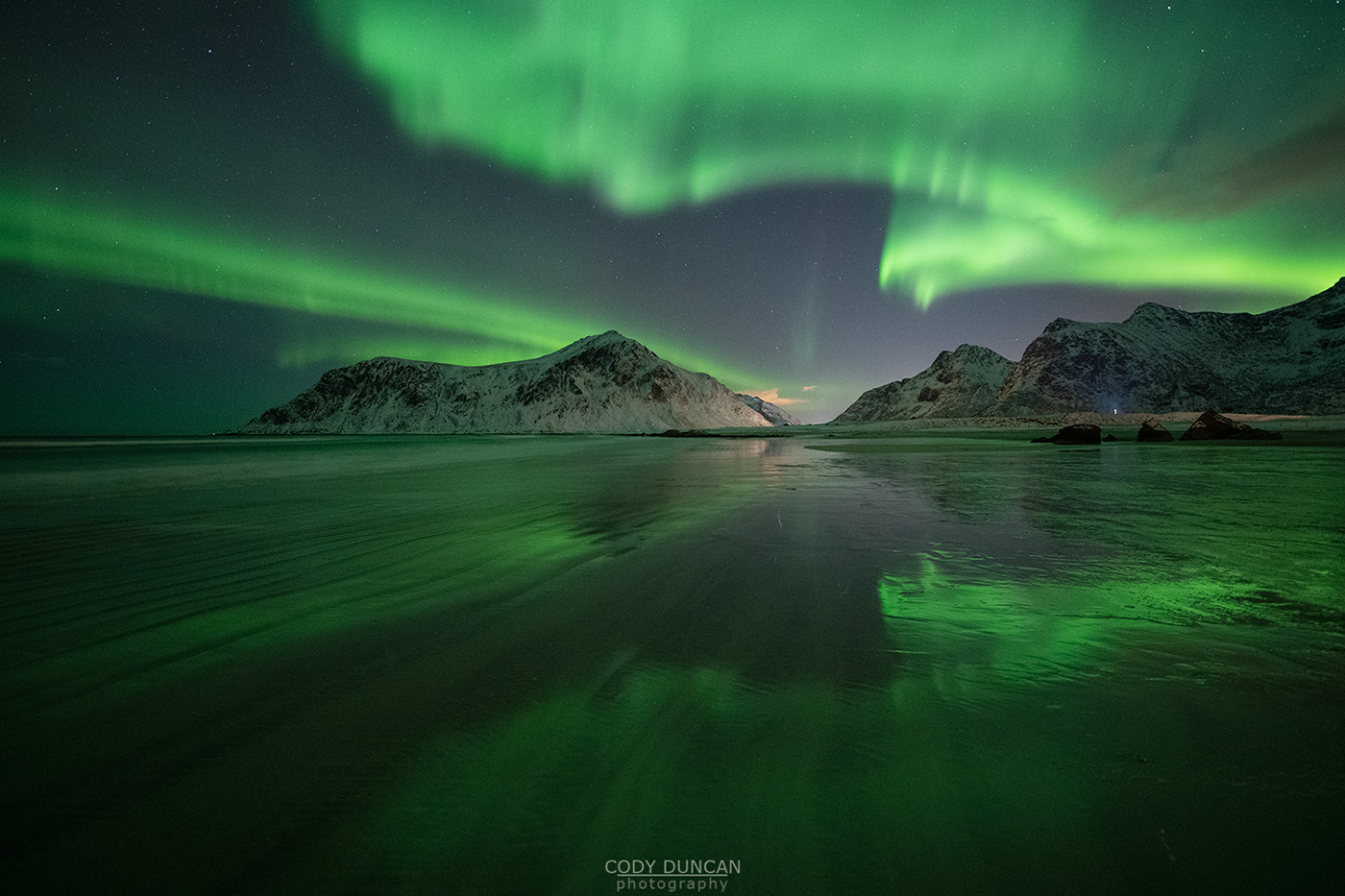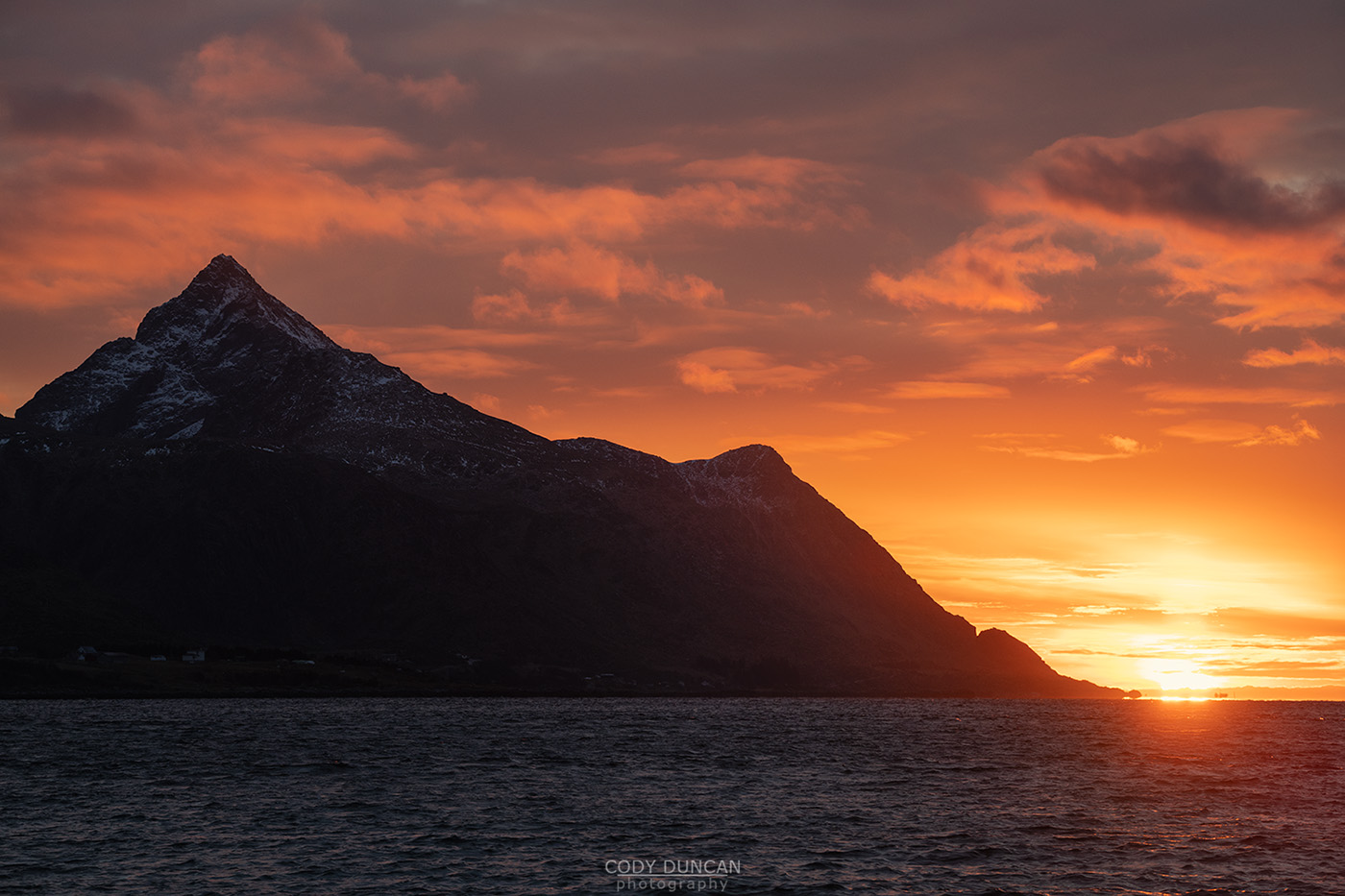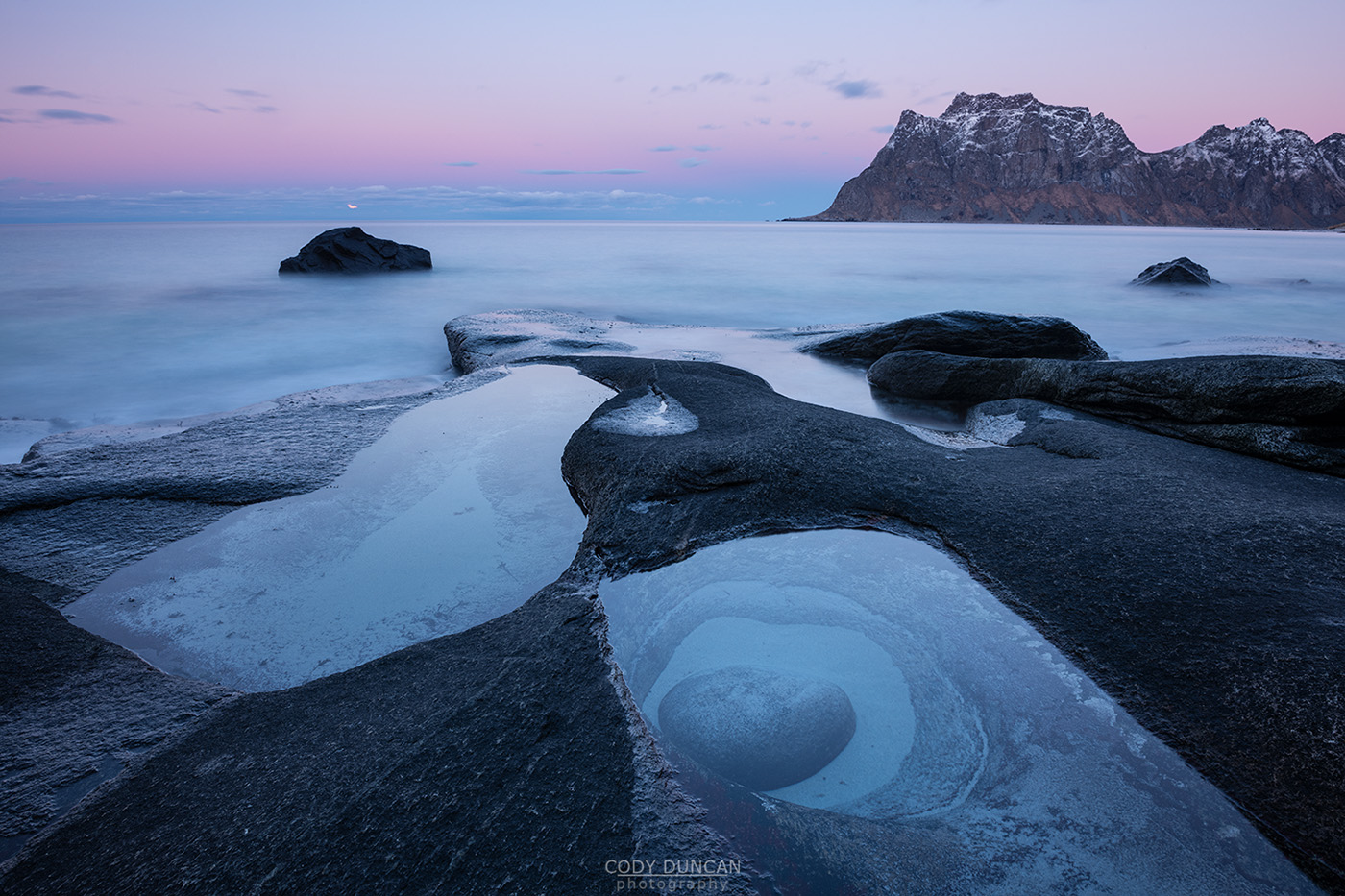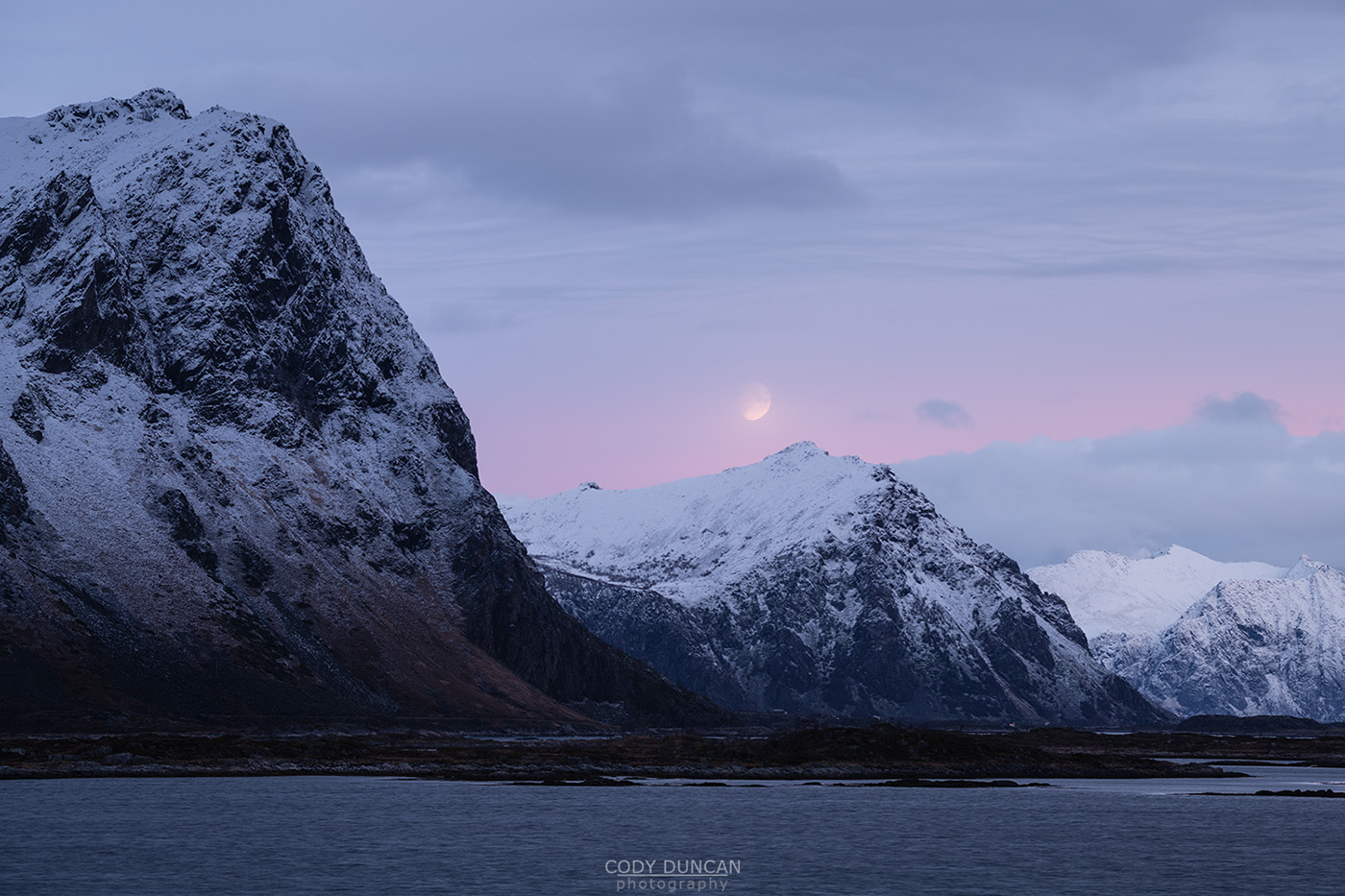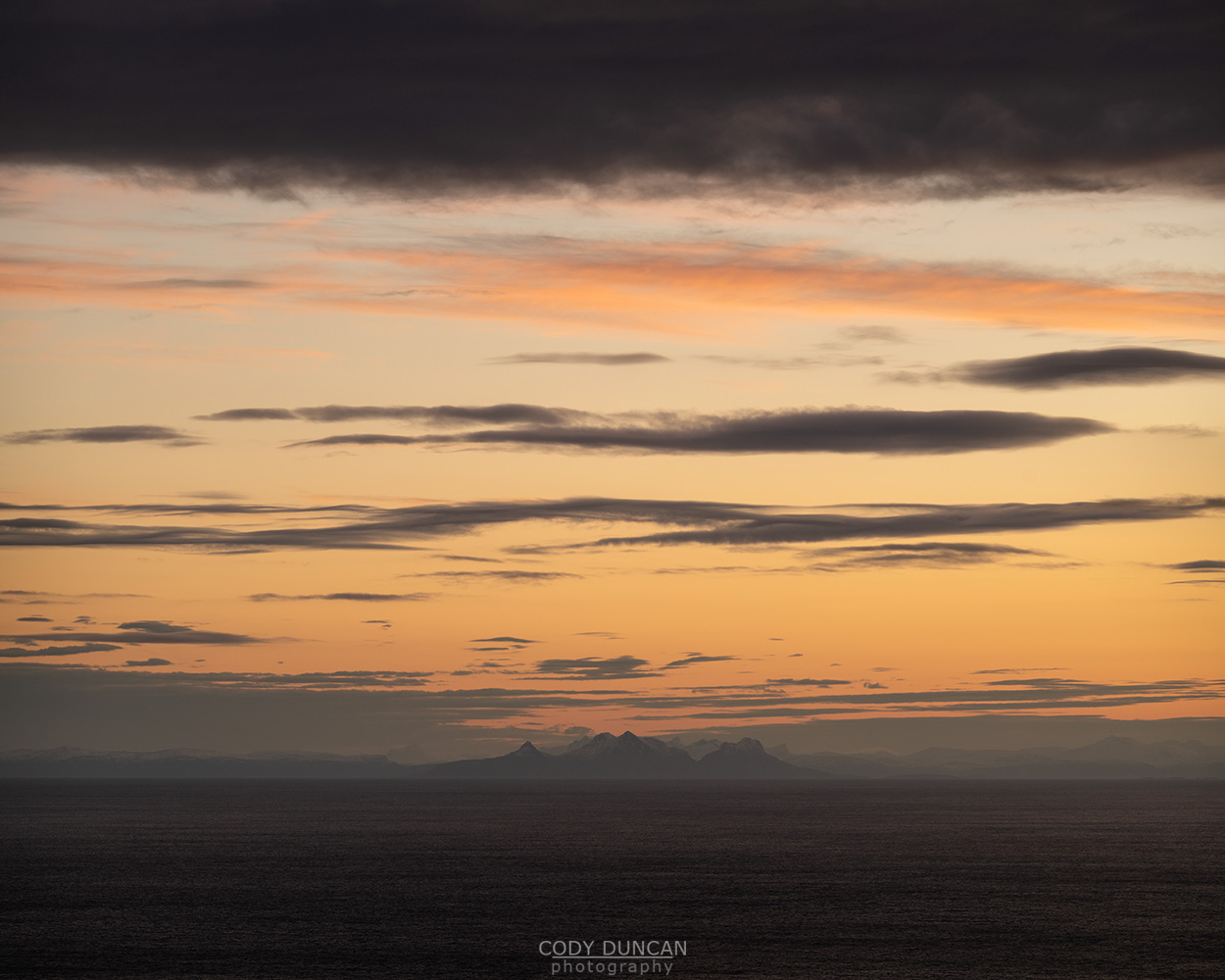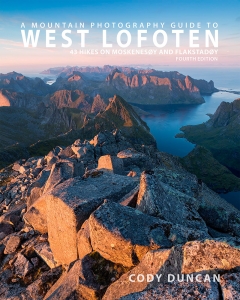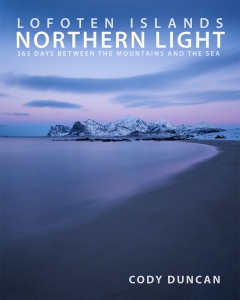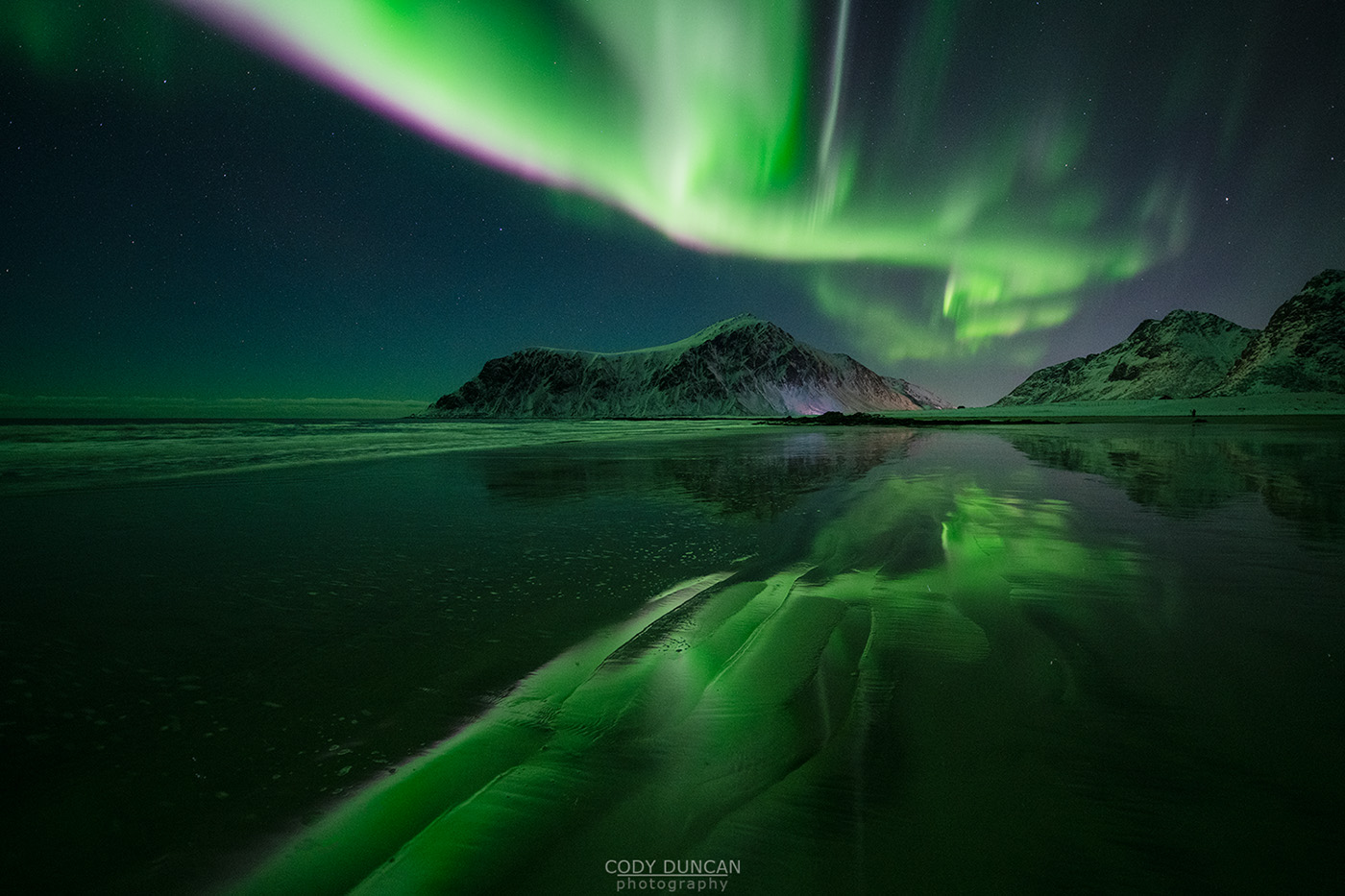
Photo: February northern lights – aurora borealis fill the sky over Skagsanden beach, Flakstadøy, Lofoten Islands, Norway. February 15, 2021. 22:12
After a weekend of clouds over Lofoten and a high aurora activity that wasn’t visible, Monday night brought a cloudless sky and a low aurora forecast. Looking at one of the space weather websites, it was stated that the solar wind had now passed earth. And yes, at 19:00 I could already see the first glow of green in the fading twilight. This turned into an all night show, still visible at 06:00 Tuesday morning. KP 2 they said…
I began the night shooting just down the road from home at one of the my local beaches. The sky produced a couple good outbreaks during that time. But finally during a calm period, I took the chance to make the 20 minute drive to Skagsanden. The temperatures where mild and the roads slippery. I passed and slowed to check on one person crashed into the ditch on the side of the road, which were fine, but unfortunately the Nappstaumen tunnel was closed for hour long periods, so the tow truck would take a while.
Most years it can be a little risky to move from a location you have to yourself to somewhere else, which might be overly crowded and impossible to shoot from. Corona has made this year different. There are only a handful of photographers actually living on Lofoten (or even overall in Norway as a whole), so as I pulled into the parking lot at Skagsanden, there was only 1 other car there.
Lucky again, the tide was cooperating, with low tide around 22:00 or so, which is perfect condition for Skagsanden – with about 100 meters from the high tide line to the low tide area across the flat sandy beach – perfect for reflections! The upper section of the beach was actually somewhat frozen, resulting in somewhat ‘dull’ reflections, so I walked down to the tide line, gentle waves crashing over my boots and the aurora shining bright in the wet sand.
Soon after my arrival the aurora increased in activity, dancing across the sky from east to west, with lots of pink highlights among the green. Despite the moonless night, the aurora was bright enough at times for me to have a shadow. Shooting in manual in the camera, one has to take care to pay attention to exposure. When I arrived at the beach, I was shooting around 4 second exposures, but when the aurora got bright, I was even down to 0.6 second for some periods of time! KP 2 they said…
I’m probably a slightly broken record with how many times I’ve said the aurora forecast doesn’t really matter. Even with all the technology and aurora apps, etc, there is still always an aura of mystery in which you never quite know what will happen. Like Monday night, which the fantastic show was the result of the earth’s magnetic sphere allowing the slow solar wind to enter. So no need for a forecast for a X-class flare and a geomagnetic storm for an amazing night of northern lights! Sometimes it just happens…
Head over to my Instagram account for (almost) daily postings of the local conditions here on Lofoten – and of nights like this when it happens: @distant.north
Camera Info:
Nikon D850
Sigma 14mm f/1.8
14mm
ISO 1600
f 2
1.3 seconds
WB Daylight

